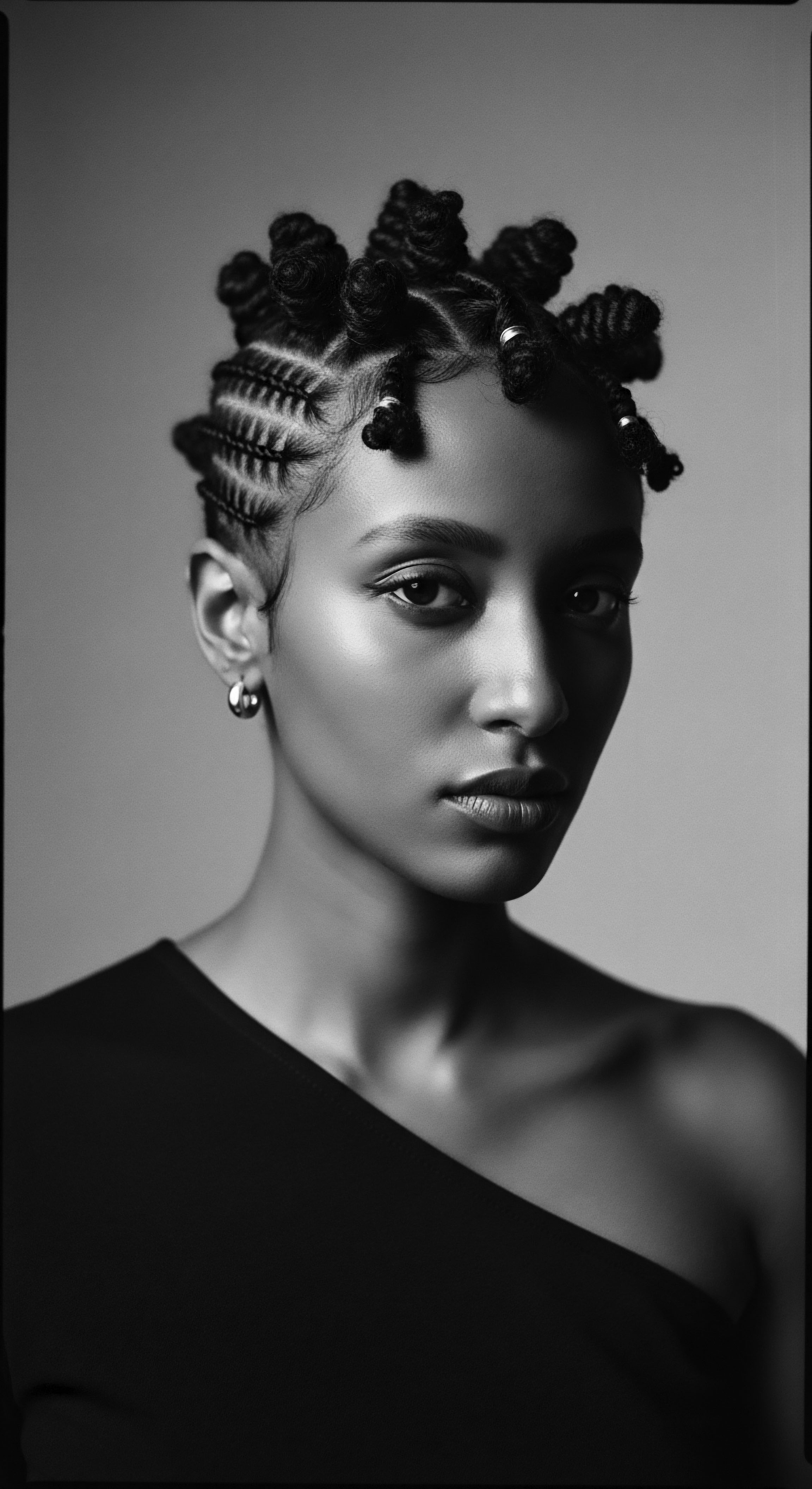
Roots
When we speak of textured hair, especially the art of cornrow braids, we touch upon something far deeper than mere appearance. We are conversing with the living memory of human ingenuity, cultural perseverance, and an unbroken lineage stretching back to the earliest known civilizations. Imagine, if you will, standing at the precipice of time, looking back through the generations. Each tightly woven row, each precisely parted section, holds stories — whispers of ancestral wisdom passed hand to hand, generation to generation.
This is not just a hairstyle; it is a repository of heritage, a visual language spoken across continents and centuries. For those whose ancestry traces through the richly diverse lands of Africa, cornrow braids are a testament to resilience, an intimate connection to the profound legacy of hair. They serve as a vibrant archive, meticulously crafted, each strand a data point, each pattern a chapter in a saga of identity.

Ancestral Hair Anatomy and Physiology
To truly understand the legacy of cornrow braids, we must first recognize the unique biological foundation of textured hair itself. Unlike straight hair, which tends to be round in cross-section, coily and curly strands possess an elliptical or flattened shape. This structural difference, coupled with the way the hair shaft emerges from its follicle at a sharper angle, creates the characteristic coils and z-shapes that define textured hair. This intrinsic curl pattern gives the hair its incredible volume and allows for sculptural styles that defy gravity, yet it also means that natural oils from the scalp have a more challenging journey traveling down the hair strand, leading to a tendency towards dryness.
It is this very characteristic that historically necessitated protective styling, giving rise to methods like cornrowing. Ancient cultures, through observation and inherited wisdom, understood these fundamental needs of textured hair, developing practices that optimized its health and manageability long before modern science offered its explanations.
Consider the hair growth cycle. Each hair follicle moves through stages of growth (anagen), regression (catagen), and rest (telogen). For individuals with textured hair, maintaining optimal conditions throughout these cycles is especially important to reduce breakage, which can sometimes be exacerbated by the natural coiling that creates points of weakness. Cornrow braids, when installed with proper tension, served as an ancient form of low-manipulation styling, protecting the ends of the hair and allowing for extended periods of growth, a practice keenly understood by those who depended on healthy hair for cultural expression and daily function.

Nomenclature and Classification of Textured Hair
The language used to describe textured hair and its styles, including cornrows, reflects a journey. In contemporary dialogue, classification systems sometimes attempt to categorize curl patterns numerically, yet these modern frameworks often miss the rich, historical lexicon that speaks to the spirit of Black and mixed-race hair. Long before numbers, there were names rooted in cultural context and the physical description of the style itself.
The nomenclature of textured hair styles, including cornrows, carries cultural depth, a living vocabulary connecting past practices to present identity.
For instance, the term “cornrow” itself is relatively recent in its widespread usage, originating in the Americas somewhere between the 16th and 19th centuries, named after the agricultural fields worked by enslaved people. In the Caribbean, the style is sometimes referred to as “cane rows” for the same reason. Yet, in Nigeria, a traditional name for a similar style is ‘kolese’, meaning “a creature without legs” in Yoruba, or more generally ‘Irun Didi’, with ‘Irun’ meaning hair and ‘Didi’ referring to the specific braided style. This distinction highlights how the legacy of forced migration imposed new terminology onto ancient practices, even while the essence of the style endured.
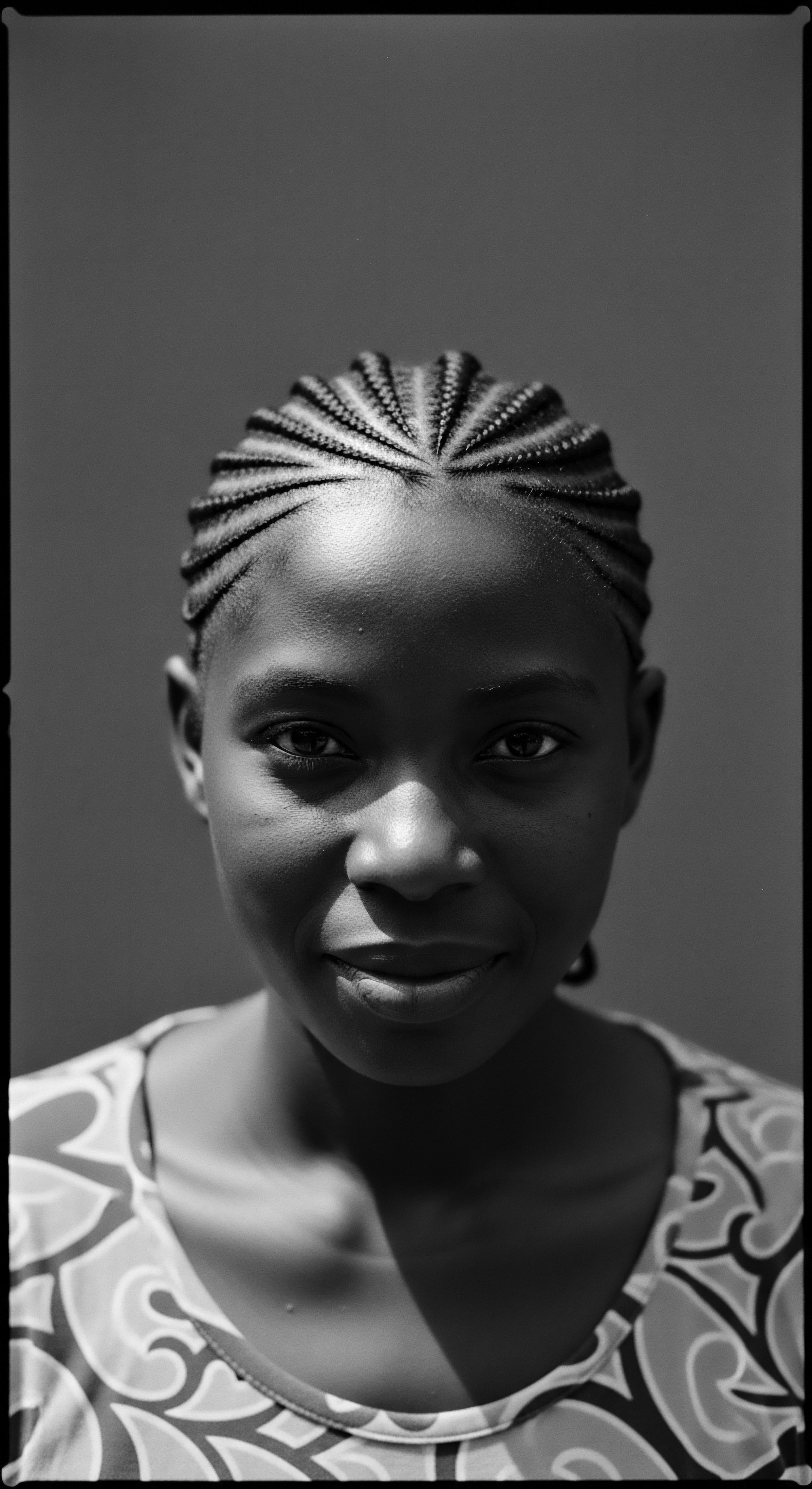
Chronicles of Origin ❉ Where Did Cornrows Begin?
The historical journey of cornrow braids reaches back thousands of years, anchoring this style firmly in ancient African civilization. Stone Age paintings in the Tassili Plateau of the Sahara show depictions of women wearing cornrows, dating as far back as 3000 BCE. Other records indicate similar styles among ancient Cushitic people in the Horn of Africa around 2000 BCE. Archaeological evidence, such as the remains of a young girl wearing cornrows dated to 550–750 AD, was found in Nubia.
Across the continent, various cultures embraced this art form, each adapting it to their unique cultural expressions and purposes. The Nok civilization in Nigeria, the Mende culture of Sierra Leone, and the Dan culture of Côte d’Ivoire all show historical connections to cornrow practices. These styles were never just decorative. In many African societies, cornrow patterns and other hairstyles served as a visual code, conveying information about a person’s:
- Community ❉ Identifying tribal or ethnic group affiliations.
- Age ❉ Signifying life stages, such as coming-of-age rituals for young girls.
- Marital Status ❉ Indicating whether a person was married or single.
- Social Position ❉ Reflecting wealth, power, or social rank within the community.
- Religious Beliefs ❉ Sometimes connecting to deities or spiritual protection.
The act of braiding itself was a communal affair, a social ritual that facilitated the passing of cultural values and techniques between generations. This shared experience deepened community bonds and ensured the enduring legacy of the style.
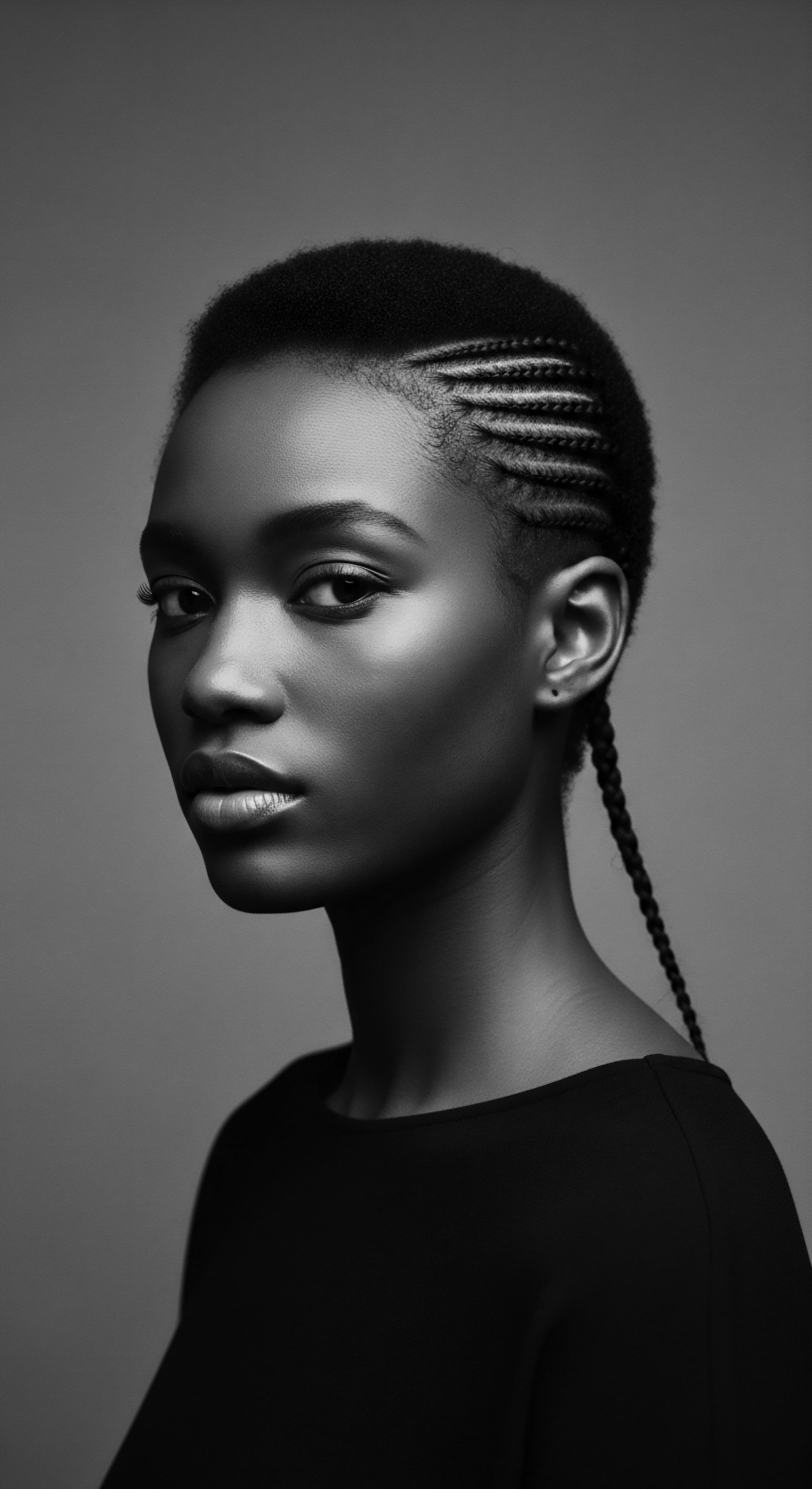
Ritual
The practice of cornrow braiding transcends mere technique; it is a ritual, steeped in care, artistry, and an ancestral understanding of hair as both a canvas and a protective shield. The hands that guide the strands, the tools employed, and the very transformation that takes place on the head are all part of a continuum that extends from ancient African villages to contemporary salons and homes across the diaspora. This is where hair science meets cultural reverence, where the physical act of styling becomes an affirmation of heritage.

Protective Styling Through the Ages
Cornrow braids have always stood as a prime example of protective styling, a practice designed to safeguard textured hair from environmental stressors and daily manipulation. The intrinsic nature of textured hair, with its propensity for dryness and tangling, meant that methods reducing exposure and friction were naturally favored. Ancient African communities intuitively understood this, developing techniques that allowed hair to thrive.
The goal of protective styling, then and now, revolves around several key principles:
- Reduced Manipulation ❉ By tucking away the hair, especially the delicate ends, cornrows minimize daily combing, brushing, and styling, which can cause breakage.
- Moisture Retention ❉ The tight, flat-to-scalp nature of cornrows helps to seal in moisture, preventing the hair from drying out as quickly as it might when left loose. This was especially vital in diverse climates across Africa.
- Protection from Elements ❉ Sunlight, wind, dust, and other environmental factors can dehydrate and damage hair. Braids act as a physical barrier against these aggressors.
This inherent protective quality of cornrows made them a practical choice for communities living in varied environmental conditions, allowing individuals to maintain hair health while engaging in daily life.

Techniques, Tools, and Transformations
The execution of cornrow braids involves a distinctive technique where hair is braided closely to the scalp, using an underhand, upward motion that creates a continuous, raised row. While the classic forms follow straight lines, the artistry quickly evolved to include intricate geometric and curvilinear designs. This foundational technique, passed down through oral tradition and hands-on teaching, speaks to a communal knowledge pool that predates written manuals.
Traditional tools for hair care and styling were often derived directly from the natural environment. These could include:
| Traditional Tools or Materials Combs carved from wood or bone |
| Purpose and Heritage Context For detangling and parting, preserving scalp health in historical settings. |
| Modern Equivalents or Parallels Wide-tooth combs, seamless parting combs. |
| Traditional Tools or Materials Natural fibers (wool, grass, flax) |
| Purpose and Heritage Context Used for adding length and volume in ancient extensions. |
| Modern Equivalents or Parallels Synthetic braiding hair, human hair extensions. |
| Traditional Tools or Materials Clay, ochre, or natural pigments |
| Purpose and Heritage Context For cleansing, conditioning, and coloring hair, especially in specific cultural rituals. |
| Modern Equivalents or Parallels Deep conditioners, hair dyes, color-depositing masks. |
| Traditional Tools or Materials Plant leaves, shells, seeds, gold fragments |
| Purpose and Heritage Context Used as adornments, often carrying symbolic or communicative messages. |
| Modern Equivalents or Parallels Hair cuffs, beads, decorative clips, ribbons. |
| Traditional Tools or Materials These comparisons illustrate how ancestral ingenuity continues to shape contemporary hair care practices, maintaining a deep connection to heritage. |
The transformation that takes place with cornrows is not merely physical. It is a shift in identity, a visible declaration of affiliation, status, or even a covert message. During the transatlantic slave trade, the significance of cornrows deepened dramatically. Stripped of their language and belongings, enslaved Africans used cornrows as a means of silent communication and resistance.
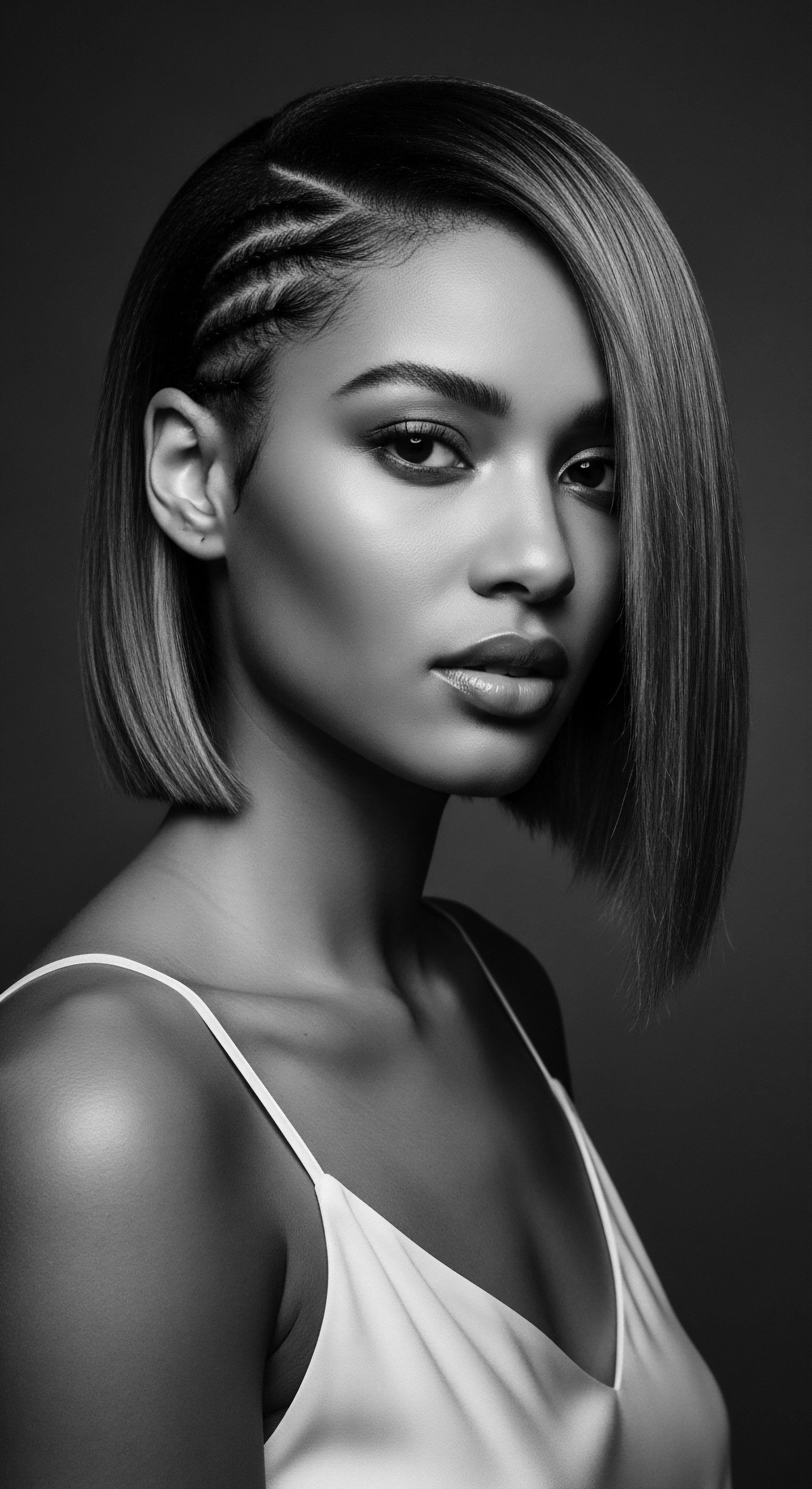
Can Cornrows Truly Serve as a Map for Escape?
Yes, historical accounts and oral traditions speak to the ingenious use of cornrow patterns as clandestine maps to freedom. This served as a remarkable act of resilience and defiance during the era of forced bondage. For instance, in Colombia, a king captured from Africa, Benkos Biohó, who later escaped slavery and founded San Basilio de Palenque, a village of liberated Africans, created an intelligence network where women crafted escape routes and messages within their cornrow patterns.
Specific patterns communicated directions ❉ a particular number of braids might indicate the count of roads, or curved braids could represent winding paths or rivers. Seeds, rice grains, or even gold fragments were sometimes braided into the hair, providing sustenance or resources for those seeking liberation. This historical example powerfully illuminates the cornrow braid’s connection to Black experiences and ancestral practices, where hair became a tool for survival and freedom, embodying a profound layer of heritage often unseen by those outside the culture. The Washington Post has documented such patterns, like the “North Star” pattern, indicating a northward escape route through three straight cornrows.
This profound adaptation of a traditional styling practice into a vital instrument of survival speaks volumes about the human spirit and the deep connection between hair, identity, and the struggle for liberation. The meticulous art of braiding became an act of both preservation and revolution.

Relay
The legacy of cornrow braids, a living continuum, passes from generation to generation, continually adapting while holding fast to its foundational heritage. This is the relay—the transmission of ancestral wisdom into modern practices of holistic care, a testament to the enduring spirit of textured hair and the communities it adorns. In this journey, we observe how ancient knowledge of hair health, once confined to specific cultural traditions, now informs broader understanding, connecting the elemental biology of the strand to profound cultural narratives and contemporary well-being.
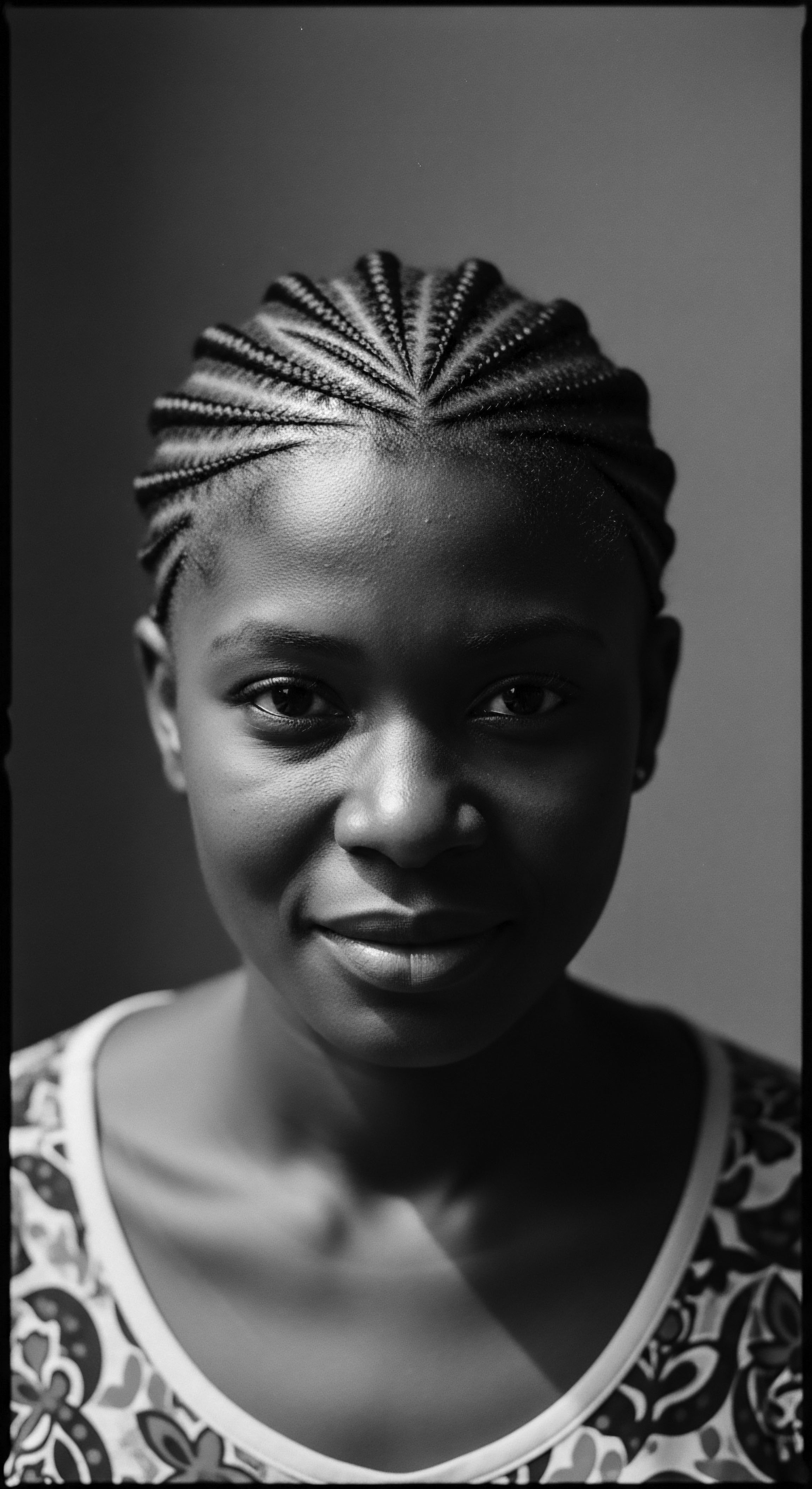
Building Personalized Textured Hair Regimens from Ancestral Wisdom
The philosophy of hair care, particularly for textured strands, has always centered on nourishment and protection. Long before the era of commercial products, African communities relied on natural ingredients and practices, a heritage that continues to inspire modern regimens. These ancestral methods often prioritized hydration, scalp health, and low-manipulation styles, principles that remain cornerstones of healthy textured hair care today.
Consider the deep-rooted tradition of using plant-based oils and butters. African oils, such as shea butter and marula oil, have been used for centuries to moisturize and condition hair. Shea butter, derived from the nuts of the shea tree, is particularly cherished for its moisturizing and healing properties, rich in vitamins A and E and essential fatty acids. This knowledge, passed down through families, underscores a holistic approach where hair health is intertwined with natural remedies and self-care.
A personalized regimen, therefore, can draw heavily from this heritage by:
- Utilizing Traditional Ingredients ❉ Incorporating African oils and butters for pre-pooing, deep conditioning, or sealing moisture.
- Prioritizing Scalp Health ❉ Many traditional practices involved scalp massage and cleansing with natural clays or soaps, reflecting the understanding that a healthy scalp is the basis for healthy hair growth.
- Embracing Protective Styles ❉ Cornrows, box braids, and twists, when done correctly, remain effective strategies for retaining length and minimizing damage.
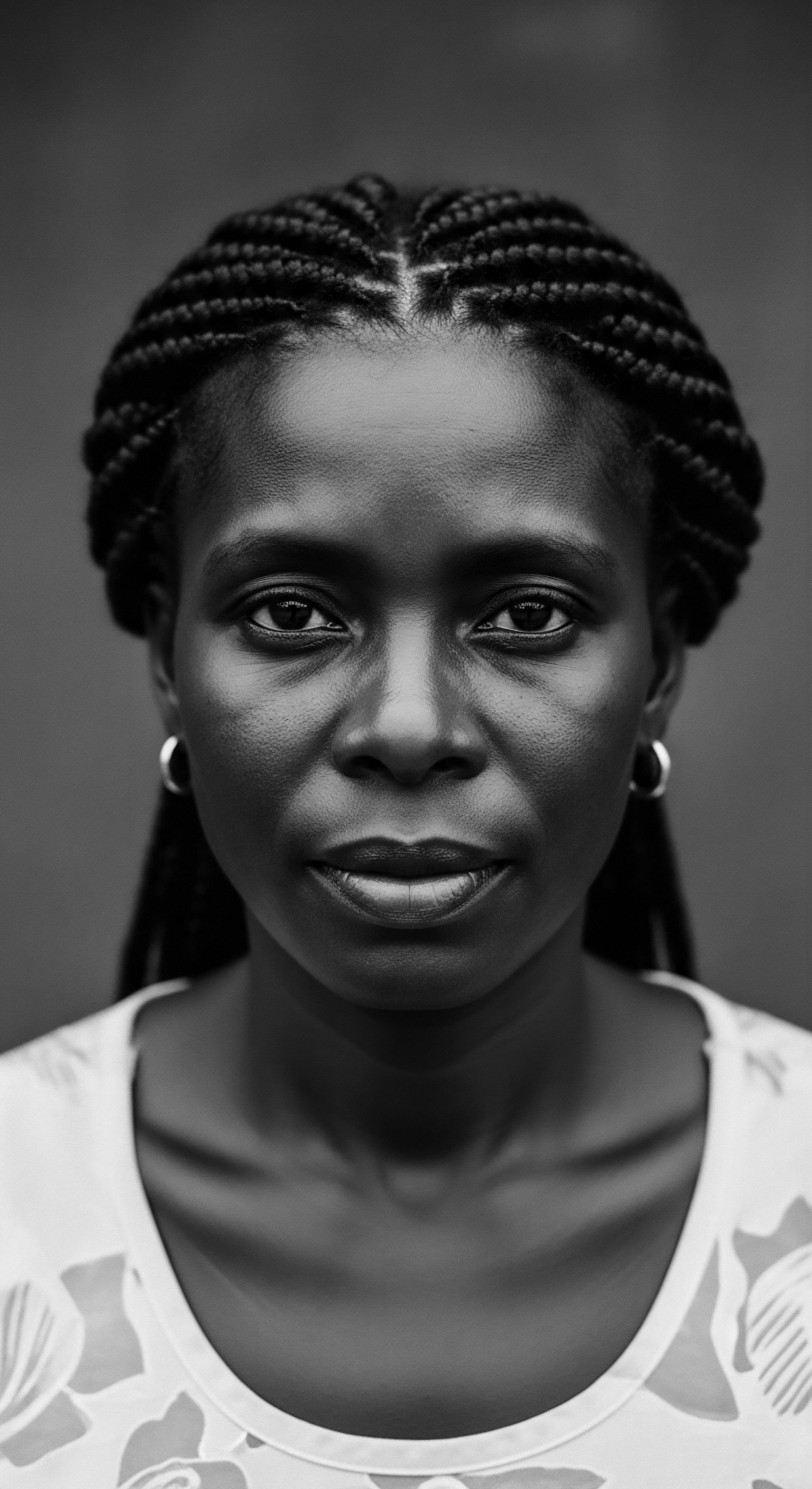
The Nighttime Sanctuary ❉ Essential Sleep Protection
The practice of protecting hair at night is not a modern trend; it is an ancestral ritual. Sleeping with exposed textured hair can lead to friction against pillows, resulting in tangling, breakage, and moisture loss. The use of head coverings, like bonnets or scarves, stems from a long-standing awareness of this vulnerability.
This tradition extends beyond mere practicality; it speaks to the reverence for hair as a precious aspect of identity and beauty. Historically, scarves were used for ceremonies or protection. The continued use of silk or satin bonnets today echoes this wisdom, creating a smooth barrier that allows hair to retain its moisture and curl pattern, reducing frizz and breakage. This simple, yet profound, act embodies the continuity of care, a legacy passed through generations to preserve the integrity of textured strands.
Protecting textured hair at night, often with bonnets or scarves, connects modern care rituals to ancestral practices of preservation and reverence for hair.
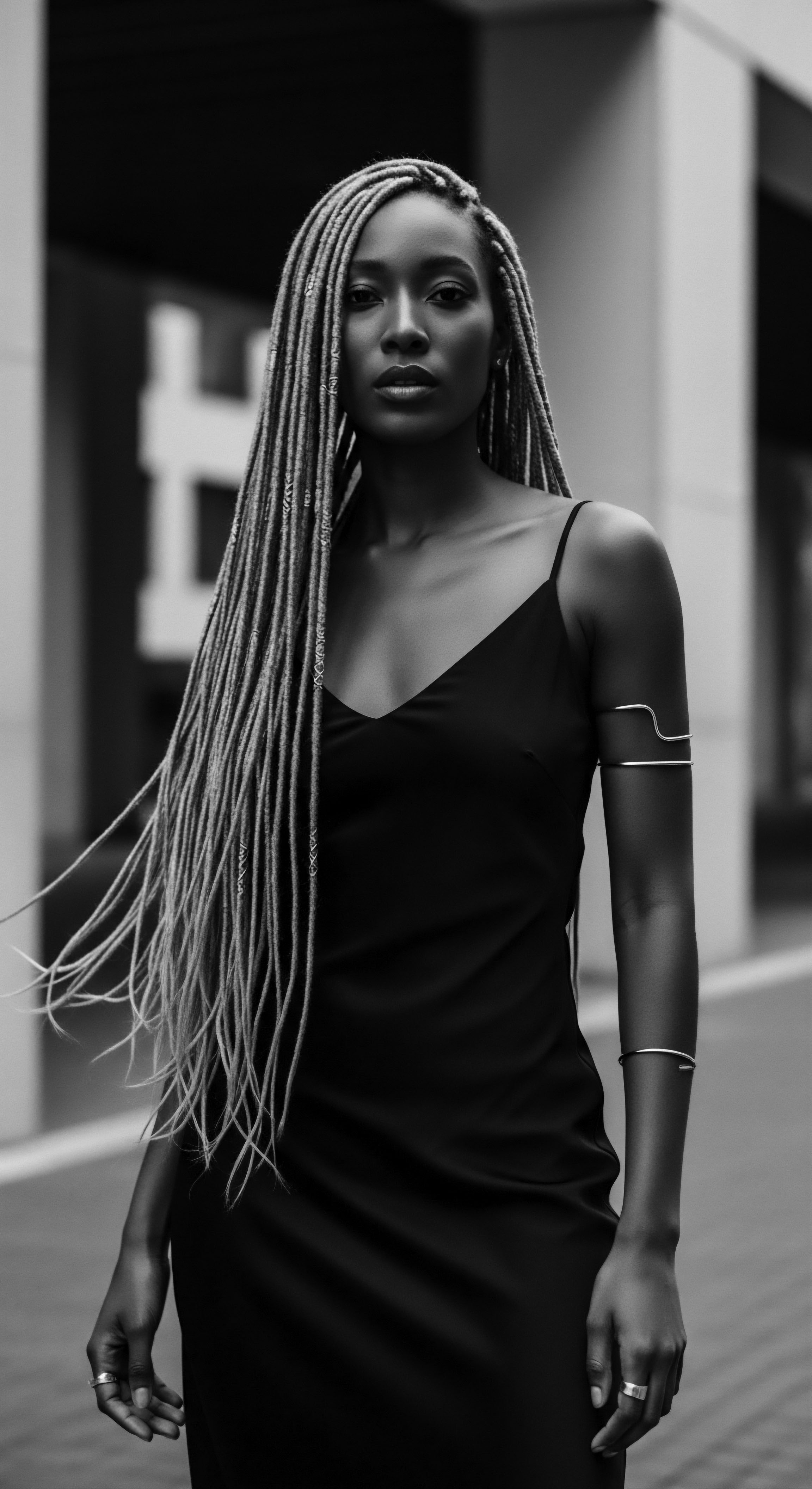
Addressing Hair Health Concerns from a Heritage View
While protective styles like cornrows offer significant benefits, their improper application can lead to specific concerns, a reality acknowledged through generations of practice and, more recently, by scientific understanding. One such concern is Traction Alopecia, a form of hair loss resulting from prolonged, excessive tension on hair follicles. This condition manifests as thinning or recession, particularly around the hairline.
This scientific explanation validates what many skilled traditional braiders intuitively understood ❉ braids must be installed with care, avoiding undue tightness. The emphasis on gentle hands and proper parting in traditional braiding circles speaks to this wisdom, aiming to create styles that protect, rather than harm. The challenge, then, becomes how to maintain the protective benefits of cornrows while mitigating potential risks.
Solutions, often echoing ancestral approaches, include:
- Mindful Installation ❉ Selecting experienced braiders who understand the importance of appropriate tension and part sizing.
- Regular Breaks ❉ Allowing the hair and scalp periods of rest between braided styles.
- Scalp Care ❉ Maintaining a clean and moisturized scalp during wear, sometimes through traditional cleansing agents like African black soap.
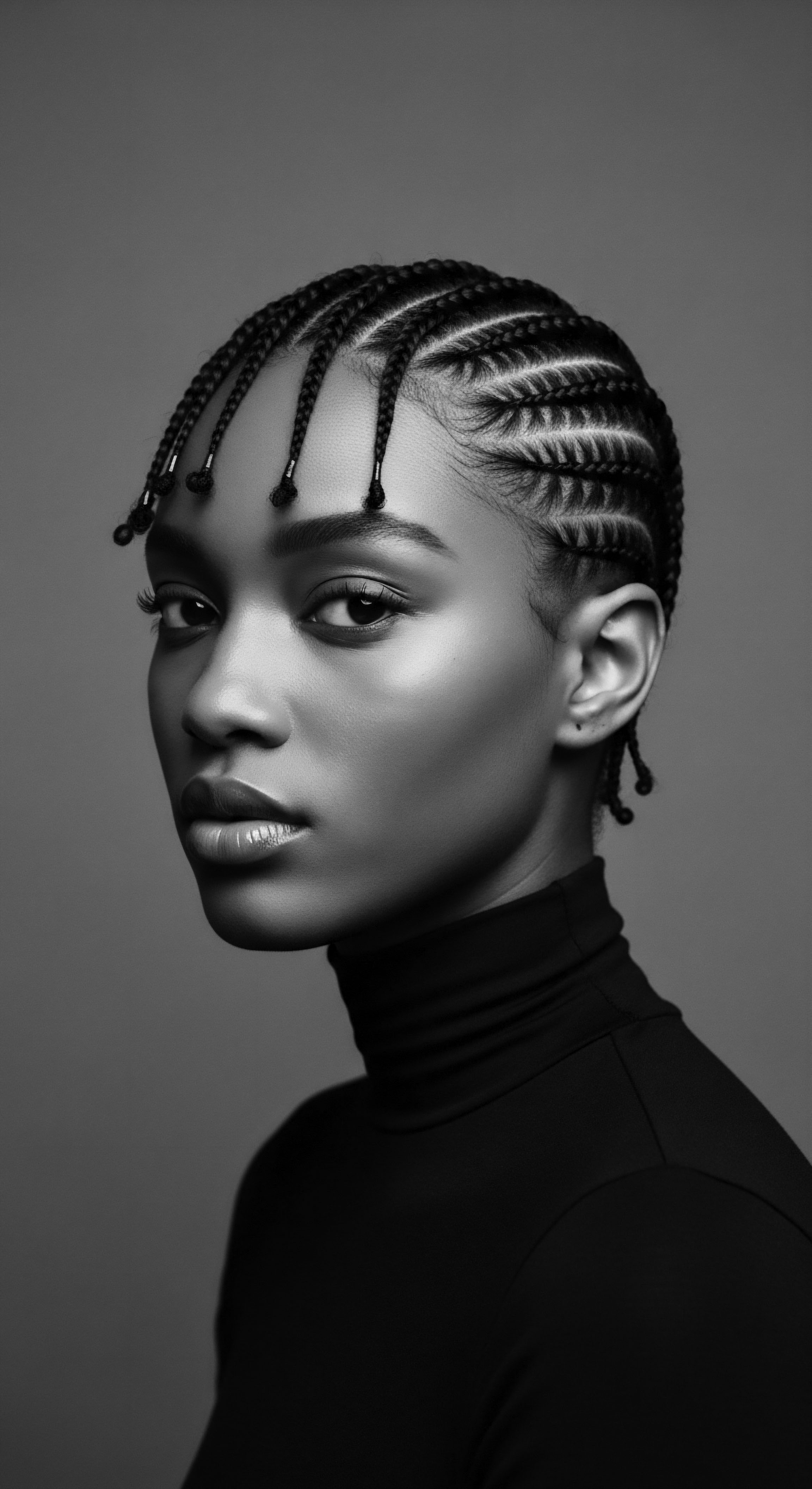
The CROWN Act ❉ Preserving Hair Heritage in Law
The societal impact of textured hair, particularly styles like cornrows, extends beyond personal care; it touches upon issues of identity, discrimination, and legal protection. For centuries, Black and mixed-race individuals have faced judgment and exclusion for wearing their natural hair or traditional protective styles in professional and academic settings. This discrimination often forced individuals to alter their hair to conform to Eurocentric beauty standards.
The legislative movement known as the CROWN Act (Creating a Respectful and Open World for Natural Hair) directly confronts this historical prejudice. The CROWN Act prohibits discrimination based on hair texture and protective styles, including braids, twists, and locs, in workplaces and K-12 public and charter schools. As of 2024, the CROWN Act has been enacted in 24 states in the United States.
This legal development serves as a modern mechanism for upholding hair heritage. It acknowledges that hair is not merely an aesthetic choice; it is a reflection of identity, culture, and ancestral pride. The CROWN Act provides a framework for challenging biases that have historically marginalized textured hair, allowing individuals the freedom to express their authentic selves without fear of reprisal. The journey of cornrows, from ancient artistry to a symbol of resistance and now a protected legal right, powerfully illustrates the enduring cultural significance of textured hair.
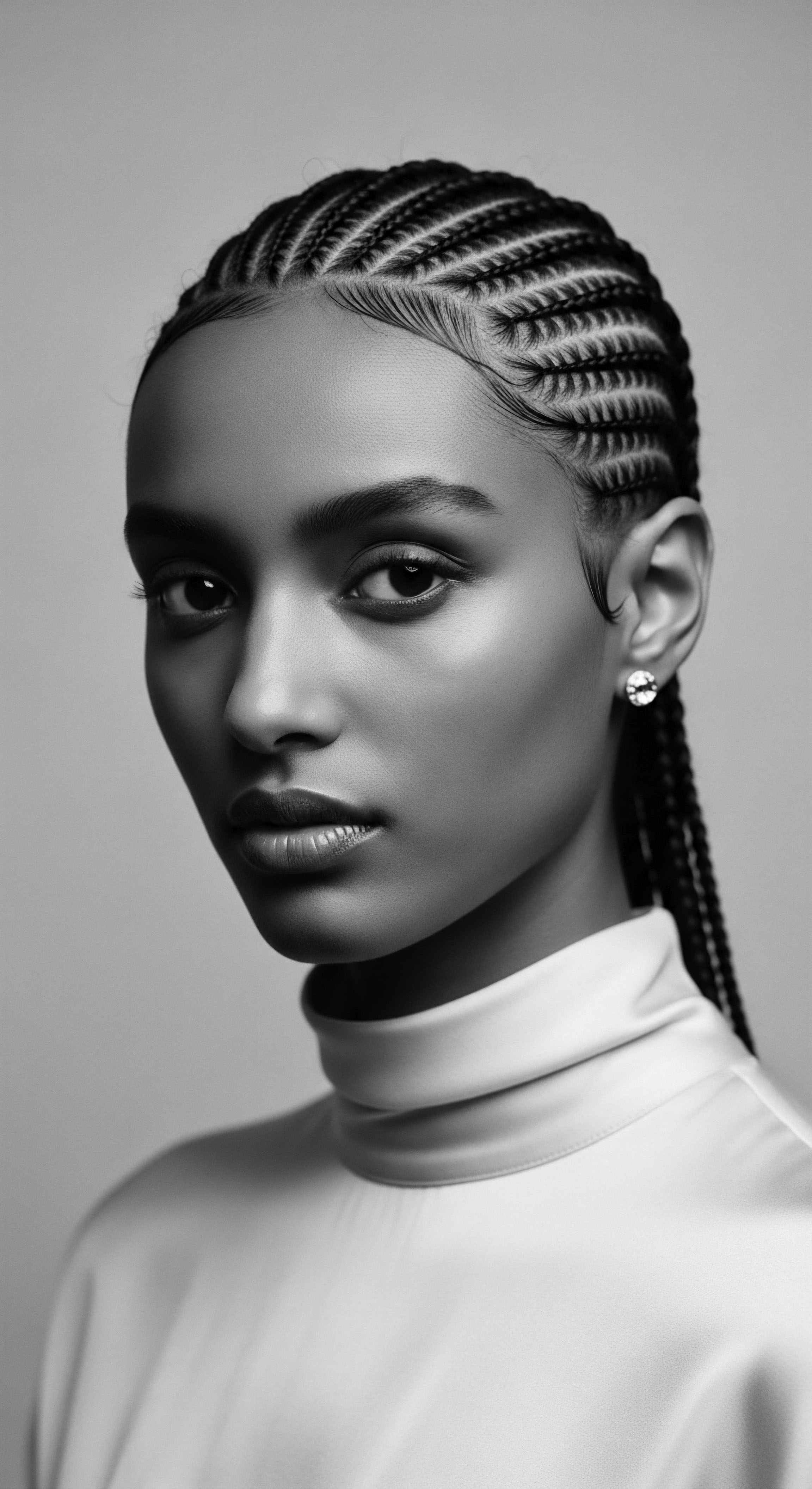
Reflection
The journey through the heritage of cornrow braids reveals a profound truth ❉ hair, especially textured hair, is a living chronicle. It is a testament to the deep-seated wisdom of those who came before us, an ever-present connection to ancestral lands and enduring cultural practices. Each cornrow, whether straight and purposeful or curved and symbolic, carries the echoes of ancient art, the whispers of communication, and the undeniable spirit of resilience. This is the Soul of a Strand—a realization that within every coil and every carefully laid row rests a story of survival, creativity, and identity.
From the hands that first braided reeds and grasses into protective styles, to the hidden messages woven during times of great hardship, and to the modern legal battles for hair freedom, cornrows stand as more than just a style. They represent a language of belonging, a silent yet potent declaration of self. They speak of community, of care passed down through generations, of the human capacity to transform adversity into enduring beauty.
Our exploration reinforces that the heritage of cornrow braids is not static; it lives, breathes, and continues to grow, adapting to new contexts while holding its core truths close. In caring for textured hair, in wearing these styles, we participate in a continuous relay of respect for a rich and powerful legacy.

References
- Black Owned Business Directory. (2019). The Secret Meaning of the African Cornrows.
- Ajao, T. (2022). Black History Month 2022 ❉ The History Behind Cornrows. Beds SU.
- Odele Beauty. (2024). A History Lesson On Hair Braiding.
- Wikipedia. Cornrows.
- Adoukè, D. (2023). Unveiling the Rich History and Origins of Cornrows. Doria Adoukè.
- the afro curly hair coach. (2022). Cornrows and The TransAtlantic Slave Trade.
- HazuHair. (2025). The History and Cultural Influence of the Braiding Hair.
- Ancient Origins. (2022). African Slaves Used Braids to Communicate Escape Routes in Colombia.
- Clinic Hunter. (2025). Do Braids Cause Hair Loss? What You Need to Know.
- Legal Defense Fund. The CROWN Act.
- Voyant Beauty. (2024). What is the CROWN Act? Promoting Hair Equality and Inclusivity.
- The Official CROWN Act. (2019). The C.R.O.W.N. Act.
- Shepherd, H. (2022). The History Behind Cornrows Is More Nuanced & Complex Than You Think.
- childish mane llc. (2023). ROAD TO FREEDOM ❉ How Enslaved Africans in America Used Hair Styles to Map Escape Routes.
- Poster Compliance Center. (2025). Understanding Hair Discrimination Laws.
- Hydro International College. (2023). Nurturing Your Tresses ❉ Understanding and Repairing Damage from Braids, Dreadlocks, and Cornrows in HAIRDRESSING / HAIR AND BEAUTY / COSMETOLOGY.
- Sellox Blog. (2021). Ancient African Hair Growth Secrets For Healthy Hair.
- Law Offices of Kell A. Simon. (2025). What is the CROWN Act and its impact?
- Afriklens. (2024). The Power of Braids ❉ Exploring the Political Power of Afro Braids.
- Ruwaa. (2024). Tresses Through Time ❉ A Journey Through the History of Hair Care.
- Khumbula. (2024). A Crowning Glory ❉ Hair as History, Identity, and Ritual.
- Africa Imports. (2021). Traditional African Secrets For Long And Healthy Hair.
- Tricoci University. (2025). The Art & Business of African Hair Braiding ❉ A Guide for Modern Cosmetologists.
- BarberSets. (2023). Cornrows ❉ History, Culture, and Contemporary Styles.
- Unclouded. (2024). The Top Five Myths About Braiding Hair, Busted.
- Private Label Extensions. (2026). The History and Cultural Influence of the Braiding Hair.
- Afriklens. (2024). Unveiling the Significance of Hairstyles in Black Communities.
- Reddit. (2023). Some of yall are really misinformed about protective styles ❉ r/Naturalhair.
- Afrocenchix. (2024). A Short Interesting History Of Hair Braiding.
- Chrisam Naturals. (2024). Traditional African Hair and Skin Care Solutions.
- My Sasun. (2023). Exploring the Rich World of Nigerian Hair and Beauty Products.
- DIY Hair Care Mastery. (2025). 10 Natural Recipes for Every Hair Type Using African Oils.
- Safo Hair. (2024). Unveiling the Significance of Hairstyles in Black Communities.
- Medical College of Georgia. (2025). Historical Perspectives on Hair Care and Common Styling Practices in Black Women.
- pan-African. (2021). A Celebration of Cornrows.
